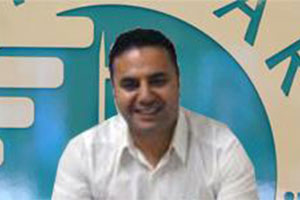Epilepsy
What is Epilepsy? Seizures, Types, and Treatment
Epilepsy, a neurological condition, is also known as "seizure disorder" in colloquial terms. This disease is characterized by the occurrence of epileptic seizures. An individual with epilepsy may experience various symptoms during a seizure. For example, falling to the ground, shaking or convulsions of the entire body, and loss of consciousness may be observed. This condition, which is challenging to perceive externally, is caused by temporary abnormal activity in the nerve cells of the brain.
Epilepsy is a highly prevalent disease, with an estimated occurrence rate of 0.5% to 1% in the general population. It is commonly referred to as "seizure disorder" in colloquial terms. The disease presents itself through seizures, which can be likened to a form of electrical leakage.
Abnormal movements occur in the balanced electrical currents of the nerve cells in the brain, leading to conditions such as loss of consciousness and loss of control over the body. The key features can be listed as follows:
- Epilepsy is the fourth most common neurological disorder.
- Epilepsy affects individuals of all ages and genders, with no difference in prevalence between males and females.
- The terms "seizure" or "convulsion" may be used interchangeably with epilepsy.
- Epilepsy is characterized by unpredictable seizures and can lead to other health issues.
- Epilepsy is a spectrum disorder with a wide range of seizure types and treatment responses that vary from person to person.
- Misunderstandings about epilepsy often result in difficulties that are more detrimental than the seizures themselves.
What are the Types of Epilepsy?
Epilepsy syndromes are defined by a set of characteristics that may include symptoms noticeable to the person and signs that can be identified by the doctor during examination or through laboratory tests. The types of epilepsy are defined based on the following features:
- Type or types of seizures
- Age at which the seizures begin
- Causes of the seizures
- Whether the seizures have a genetic basis
- Parts of the brain involved
- Factors that trigger the seizures
- Severity and frequency of the seizures
- Pattern of seizure occurrence throughout the day
- Specific patterns observed during seizures and in between seizures on an electroencephalogram (EEG)
- Brain imaging findings, such as magnetic resonance imaging (MRI) or computed tomography (CT) scans
- Genetic information
- Coexisting disorders in addition to seizures
- Prognosis for improvement or worsening
Based on these characteristics, the types of epilepsy are classified as follows:
Benign Rolandic Epilepsy: It is one of the types of childhood epilepsy. It manifests with symptoms such as drooling, temporary inability to speak upon awakening from sleep, and tilting of the lips to one side. Typically, the condition is outgrown during adolescence.
Benign Occipital Lobe Epilepsy: This type of epilepsy, occurring in childhood, is characterized by visual disturbances and prolonged periods of fixed gaze.
Temporal Lobe Epilepsy: This epilepsy, which is seen in adults, is characterized by loss of consciousness and peculiar behaviors.
Childhood Absence Epilepsy: This epilepsy is frequently observed during elementary school age and is characterized by brief periods of inattentiveness lasting from 5 seconds to 1 minute.
Juvenile Myoclonic Epilepsy: It is a type of epilepsy that occurs during adolescence. Prominent symptoms include sudden jerks and dropping objects, particularly in the mornings.
Frontal Lobe Epilepsy: It is named after the frontal lobe region of the brain where it originates. Seizures occur suddenly.
Benign Familial Infantile Epilepsy: It is a type of epilepsy commonly seen in newborns and is often of genetic origin.
Photosensitive Epilepsy: It is a rare type of epilepsy characterized by extreme sensitivity to light.
Infantile Spasms: It occurs during the pre-one-year-old infancy period. The most prominent feature is the repetitive flexion and extension of the body.
What are the Causes of Epilepsy?
The causes of epilepsy can vary, and in some cases, the exact cause may not be fully determined. Generally, the causes of epilepsy include:
- Hippocampal sclerosis
- Central nervous system infections
- Brain tumors
- Immunologically-mediated inflammations
- Developmental abnormalities in brain blood vessels
- Genetic predisposition and hereditary diseases.
Some types of epilepsy occur as a result of dysfunction in a specific region of the brain, leading to abnormal electrical activity that spreads from that area. Examples of such epilepsies can be seen as a result of brain tumors and traumas. In some epilepsy types, however, there is no damage in a single region. Epileptic seizures can originate simultaneously in the entire brain. Epilepsies that begin in childhood are generally of this type. Epilepsy types also vary from person to person, which can influence the causes and factors contributing to epilepsy. This is because not every individual with epilepsy exhibits the same symptoms.
What Are Epilepsy Symptoms?
Since epilepsy affects the brain, it can disrupt various functions that the brain controls. The symptoms of seizures can manifest in different ways. Some of the common symptoms of epilepsy include:
- Temporary confusion and behavioral inconsistencies
- Speech disturbances
- Brief periods of loss of consciousness
- Psychological difficulties
- Involuntary tremors
- Uncontrolled movements of the arms and legs
- Sudden falls
The most common symptom we observe during an epilepsy seizure is loss of consciousness. During an epilepsy seizure, loss of consciousness is accompanied by drooling, dizziness, and automatic movements in the mouth, as well as jerking in the arms and hands. In more severe seizures known as grand mal seizures, falling to the ground and intense body convulsions are observed. In such cases, biting the tongue or lip and urinary incontinence may also occur. In some seizures seen in childhood, only eye fluttering without convulsions can be observed.
The most common manifestations are loss of consciousness, falling, and body convulsions. Seizures can occur during daytime or during sleep at night. Generally, it is difficult to determine when there are signs of epilepsy.
The timing of epilepsy seizures is unpredictable, although some patients may have a sense of when a seizure is about to occur. In some cases, epilepsy seizures may manifest as brief episodes of staring without falling or convulsions. Epilepsy can present itself with a wide range of symptoms, which vary from person to person. In such cases, the best course of action is to seek treatment and guidance from a medical specialist.
In order to diagnose epilepsy, it is necessary to understand how the patient experiences the seizures. Therefore, a detailed assessment of what occurs during the seizures must be made. Additionally, if there is suspicion of a seizure, an Electroencephalogram (EEG) is performed to record the electrical activity of the brain. Magnetic Resonance Imaging (MRI) and Computerized Tomography (CT) scans are other diagnostic tests used for epilepsy diagnosis.
To understand the type of epilepsy, it is important to determine how the seizures occur and their frequency. Nowadays, mobile phones can be helpful in this regard. Recording the moment of a seizure on camera can allow the doctor to see how the seizure manifests.
How to Treat Epilepsy?
Epilepsy is a condition that can be effectively managed with appropriate treatment methods. There are advanced treatment options available today. The question of how epilepsy is treated can vary depending on the individual's specific seizures. However, the general approaches to epilepsy treatment include:
- Medication therapy
- Surgical treatment
- Dietary therapy
- Neurostimulation device applications
- Complementary health approaches
- Clinical trials
Different types of seizures require different medication treatments. The approach of using a single medication at the highest effective dose is a common method in pharmacological treatment. The ketogenic diet is a high-fat, low-protein, and low-carbohydrate diet that has shown effectiveness in improving the condition of some patients.
The most crucial step in treating epilepsy is establishing a proper diagnosis. Once the diagnosis is made, the specific type of epilepsy is determined. Treatment is then tailored to the identified epilepsy type. One significant treatment option for specific epilepsy types is the ketogenic diet. Additionally, appropriate medication dosage and selection are important for the treatment of specific epilepsy types. Another treatment option is epilepsy surgery, which can be considered for suitable epilepsy types and patients.
In daily life, individuals with epilepsy can experience seizures anywhere, at any time. It is crucial to be informed about what to do during an epilepsy seizure. When you encounter someone having a seizure, here's what you should do:
- First and foremost, remain calm. Then, the initial step is to ensure the person's safety by placing them in a position where they won't harm themselves.
- Do not attempt to forcibly stop the person's involuntary movements.
- Avoid trying to close the person's jaw or inserting anything into their mouth to prevent tongue biting.
- If the person has tight or uncomfortable clothing, loosen or remove it.
- Do not give the person water to drink, as it may lead to choking.
- Avoid creating a crowded space that may restrict the person's movement.
- Be aware that the seizure is temporary, and it is important to observe the person while allowing them to recover.
What should be done during an Epileptic Seizure?
Epilepsy patients can experience seizures at any time and anywhere in their daily lives. It is crucial to be informed about what to do during an epileptic seizure. Here are the steps to take when you witness someone having a seizure:
- First and foremost, it is important to stay calm. Then, the initial step is to position the person in a way that they won't harm themselves.
- Do not attempt to forcibly stop the person's involuntary movements.
- Avoid trying to close the person's jaw or pull out their tongue.
- If the person is wearing tight or uncomfortable clothing, loosen or remove it.
- Do not give the person any water to drink, as it can lead to choking.
- Do not create a crowded space that could make the person feel confined.
- Remember that the seizure is temporary, and it is important to observe the person while giving them space.
What Should Epilepsy Patients Take Care of?
It is crucial for epilepsy patients to be aware of their condition and actively manage it. The most important step in coping with this disease is to recognize the disease and its seizures. Here are some key points that epilepsy patients should pay attention to:
- Take your prescribed medications regularly and on time.
- Avoid being on or near hard surfaces to reduce the risk of injury from falls.
- Carry an identification card or wear a medical alert bracelet to inform others about your epilepsy condition.
- Avoid locking the bathroom door while bathing to ensure quick access in case of a seizure.
- Limit exposure to excessive light, including bright or flickering lights that may trigger seizures.
- Maintain a regular sleep schedule and avoid sleep deprivation, as lack of sleep can potentially trigger seizures.
- Take precautions to prevent head injuries in case of sudden falls.
- If seizures persist, refrain from driving and consult with your doctor to determine if it is safe to drive.
While complete recovery from epilepsy may not be possible for every patient, the majority of individuals can have their seizures effectively controlled with treatment. However, it is crucial for patients to remain under regular medical supervision and have the progression of the disease carefully monitored.
During an epilepsy seizure, the initial response and intervention from people in the surrounding area are vital. It is important to avoid doing anything that could harm the person experiencing the seizure.
Epileptic Seizure
An epileptic seizure occurs as a result of abnormal electrical activity simultaneously starting from a specific region or throughout the brain. Following this activity, brain functions are temporarily impaired, either partially or entirely. Seizures typically last a few minutes, but if a seizure lasts longer than 5 minutes, an ambulance should be called, and the person should be taken to the emergency room. Although patients may regain consciousness after a seizure, it can take them a while to fully recover.
To manage their condition effectively, individuals with epilepsy should:
- Maintain regular sleep patterns
- Avoid alcoholic beverages
- Limit prolonged and close-up television viewing
- When entering the sea, ensure that the water does not go above knee level
- Limit consumption of caffeinated beverages such as tea, cola, and coffee
- Refrain from driving motor vehicles until the epileptic seizure has subsided
- Take their medications regularly as prescribed
- Avoid stress.
When should a specialist be consulted for epilepsy?
In case of experiencing any epileptic seizure, it is necessary to immediately consult a neurology specialist. During an epileptic seizure, it is important to remove any objects or hazards that may harm the person without intervening directly.
What are the medications for epilepsy?
There are many medications available for epilepsy. The most commonly used drugs for epilepsy and epileptic seizures include those containing the active ingredients valproic acid, carbamazepine, phenytoin, levetiracetam, lamotrigine, and topiramate. These medications work by suppressing seizures and stopping abnormal electrical discharges in the brain.




